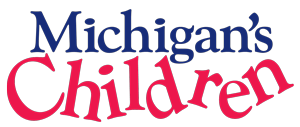FY2015 Budget: An Opportunity to Address Equity
April 28, 2014 – Previously I blogged about the difference between equity and equality to reiterate the importance of focusing on equity-promoting strategies when it comes to public policy and budget decision-making. As the Michigan Legislature continues to move the fiscal year 2015 (FY2015) budget proposals along, it’s important to keep track of what budget decisions they are making and how they will reduce disparities in child and family outcomes or increase them.
The House Appropriations Committee and the Senate Appropriations Committee both approved their budget proposals for FY2015, which begins on October 1, 2014 and ends September 30, 2015. The budgets will now head to the House and Senate floors before heading to Conference Committee where differences will be ironed out. The House and Senate budget proposals include some variations from the Governor’s budget proposal – differences that will affect how this budget impacts equity.
Here are just a few highlights.
- Only the House Committee included $3 million for high quality after-school programming, one of the most powerful tools to reduce disparities in educational outcomes. The Senate Committee did not include this funding.
- Both the House and the Senate Committees included the Governor’s recommended $65 million for the Great Start Readiness Program – a program proven to reduce the achievement gap. Unfortunately, neither include the Governor’s recommended $100 per-slot increase and instead focus on targeted funding for transportation services. While transportation is a barrier for many challenged families who might otherwise benefit from GSRP, the current slot amount of $3,625 continues to be insufficient to cover the true costs of running this high quality program. The Legislature should be focusing on increasing the slot amount while also providing additional funds to support transportation. Furthermore, the Legislature should be looking at ways to support community-based providers so that they too can be a GSRP provider that parents can choose. While the House included language to provide additional guidance on how Intermediate School Districts work with community-based providers to expand GSRP, the Senate did not include this language.
- Both the House and Senate Committees include funding for pilot programs – one for a school-community partnership in Northern Michigan and another for the Michigan Reading Corps to get more kids reading proficiently by third grade. While both of these are steps in the right direction, instead of minimal funding for small pilots, Michigan needs consistent funding to support what we already know that it takes to ensure that our most challenged students can succeed while reducing the achievement gap – a high quality education experience that partners with communities and families to provide basic, health, mental health, and other services that students need to succeed.
- Both the House and Senate Committees include additional funding for non-Medicaid community mental health, recognizing that Medicaid Expansion (aka the Healthy Michigan Plan) wouldn’t result in the savings the Governor’s recommendation anticipates. This is a step in the right direction because we know that having access to mental health services is not only critical for challenged children and youth but also their parents to ensure a stable and healthy home environment. Unfortunately, the Senate Committee increased funding for non-Medicaid Mental Health but only included a placeholder to implement the recommendations of the Mental Health and Wellness Commission.
See our latest Budget Basics for a full report on how the Governor, House, and Senate budget proposals will work to shrink or increase equity gaps.
-Mina Hong
